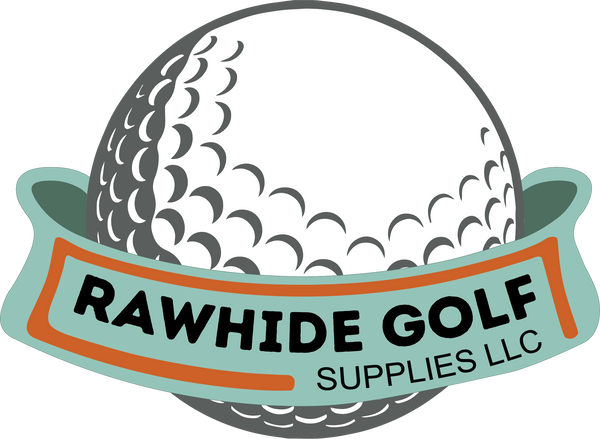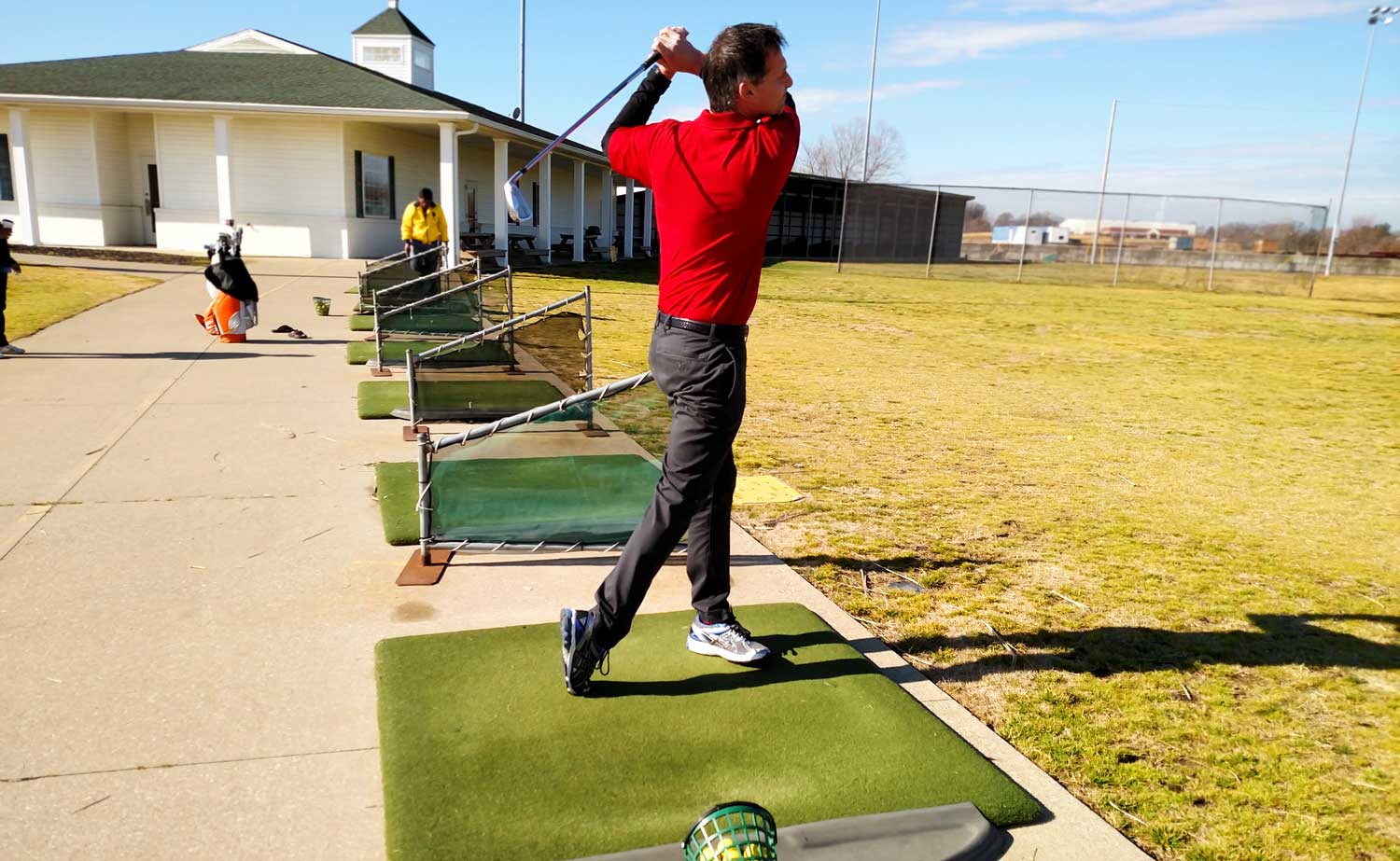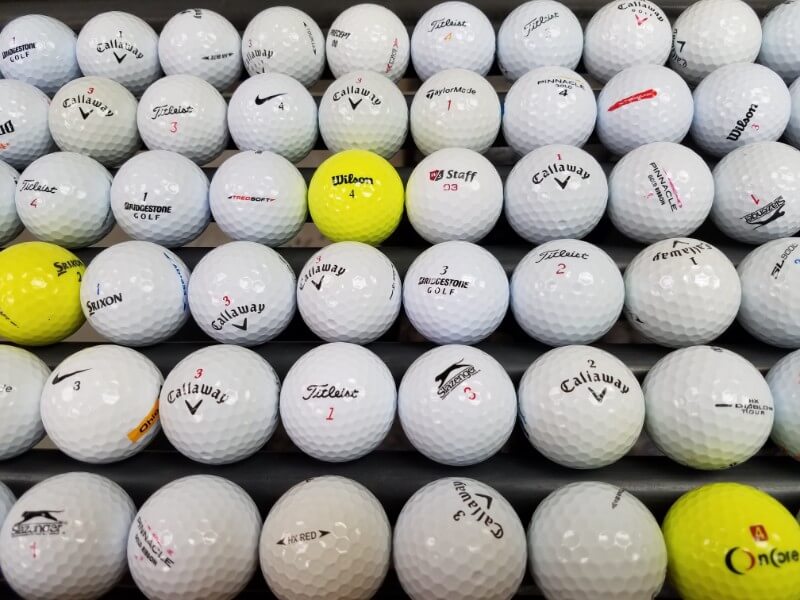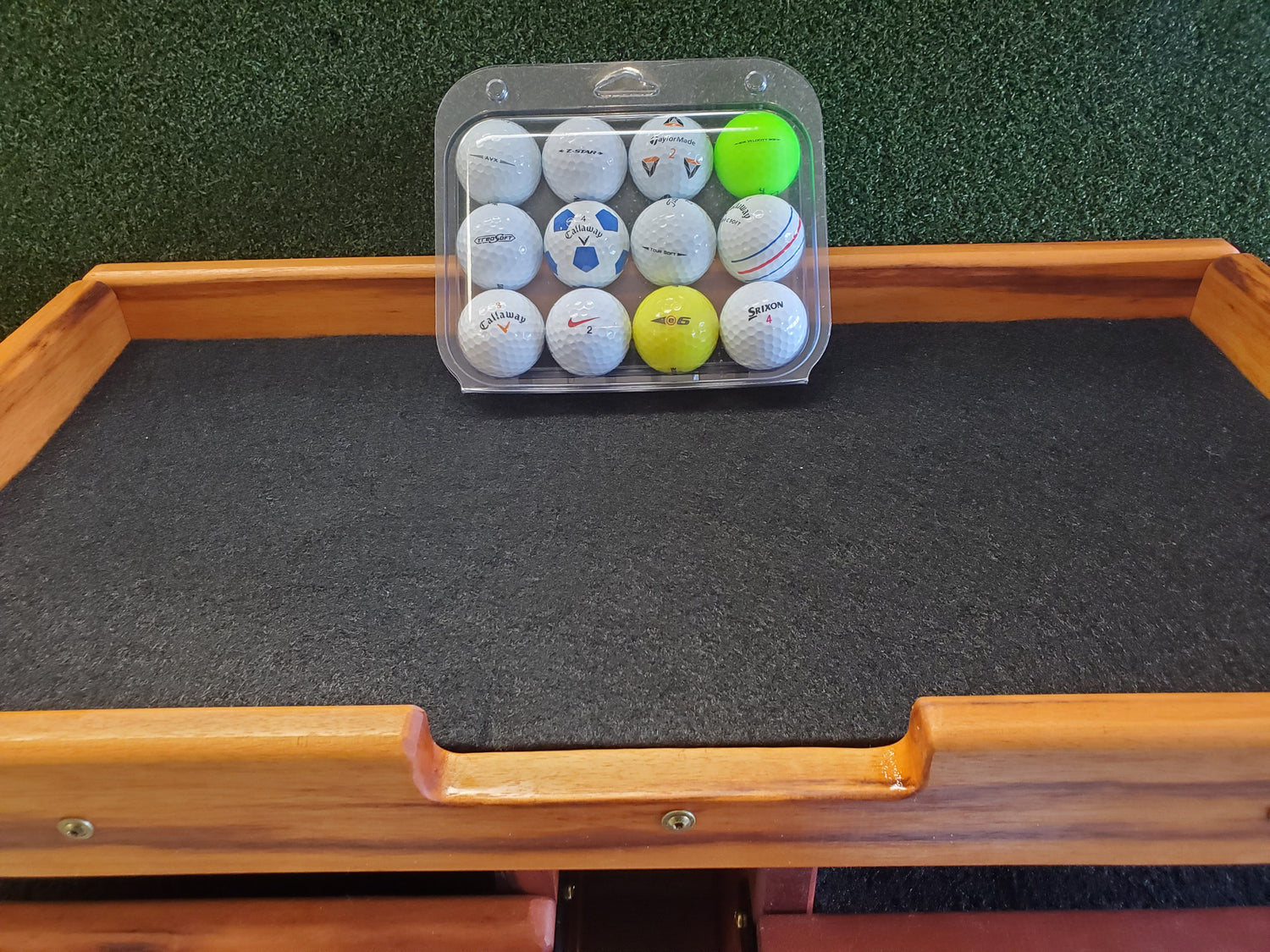10 FAQs About Golf Balls
Share
10 FAQs About Golf Balls
While it’s true that enjoying golf is mostly about how you play the game, your choice in essential equipment like golf balls still matters. The more you know about the balls you’re using, the better equipped you’ll be to pick options that help you get the most out of your favorite sport.
1. How Many Dimples Are There on a Golf Ball?
The number, shape, and depth of the dimples on your ball affect many things about how it travels through the air, including how far it can go and how it performs while it’s in motion. The majority of golf balls have somewhere between 300 and 500 spherical dimples across their surfaces. The depth of most dimples measures in at about 1/100th of an inch.
2. How Much Does a Golf Ball Weigh?
Golf balls need to conform to strict criteria outlined in the official rules of the game. According to the USGA and the R&A, a golf ball can’t be heavier than 1.62 ounces to be considered compliant. It also must be spherically symmetrical. The dimples across the golf ball’s surface must be symmetrically arranged as well.
3. How Big Is a Golf Ball?
In addition to the weight limit addressed above, golf balls must adhere to rules governing how big or small they can be as well. A rule-compliant golf ball may not be smaller than 1.68 inches in diameter. It also needs to function within specific velocity and distance limits. All golf balls undergo rigorous testing before being approved for competition to ensure they meet all required criteria.
4. Why Do Golf Balls Have Dimples?
When an object (such as a golf ball) is in motion, air moves smoothly over, across, and around the contours of its front-facing surface. As it makes its way toward the backside of the object, it gradually separates from it. Flying objects also leave behind a turbulent wake as they move through the air. A golf ball’s dimples allow air to flow across its surface more closely and leave behind a smaller, less turbulent wake. A dimpled ball has 50 percent less drag than it would without dimples.
5. What’s Inside a Golf Ball?
The average golf ball’s outside isn’t all that’s undergone many changes over the years to make it more streamlined and aerodynamic. Engineers have been hard at work, improving the inside as well. Most modern golf balls have cores made from synthetic rubber, occasionally mixed with small bits of plastic or metal. As of 2012, said core is usually surrounded by three more layers, each harder than the last. They are most commonly made of synthetic rubber, an ionomer resin called HPF 1000, and thermoplastic, respectively.
6. Who Makes Kirkland Signature Golf Balls?
Costco’s trademark Kirkland Signature brand is famous for producing budget-friendly alternatives to expensive name brand products. In 2016, the label expanded to include affordable, high-quality golf balls, much to the great delight of avid golfers everywhere. As of 2018, SM Global LLC, an American subsidiary of one of Costco’s Korean manufacturing partners, handles the production of Kirkland Signature golf balls.
7. Do Golf Balls Go Bad?
Many golfers worry that balls they’ve had a while may not be as aerodynamic or practical as they would have been years ago, but they shouldn’t. Modern balls have solid cores surrounding many multiple layers, meaning brand new golf balls are good indefinitely. However, as you use your balls, they’ll eventually develop imperfections and scuffing across the surface that could affect the way they roll, fly, or settle while in play.
8. What Do the Numbers on Golf Balls Mean?
You may have noticed that golf balls all come with a number, usually appearing just underneath the brand name on its surface. This number typically falls somewhere between 0 and 9, but if the ball was custom-ordered, it might have a double-digit number of 10 or higher. The numbers are identifiers, so that players can better tell their balls apart from others.
9. How Long Do Golf Balls Last?
Although unused golf balls technically never “go bad,” the design of the typical golf ball has undergone many changes over the years. For that reason, newer golf balls are much more likely to perform better, as they’ll be reflective of the latest design advancements. Once a ball has been in play, you can expect it to last 5-7 years if it’s a two-piece ball and perhaps 2-3 years if it’s a three-piece.
10. How Fast Does a Golf Ball Travel?
According to the USGA and the R&A, a given golf ball’s velocity shouldn’t exceed 250 feet per second. However, many factors could affect how quickly a ball travels. These include the club’s speed, the club’s material, the striking angle, and the weight of the ball. Assuming the golfer hits the ball at a swing speed of 109 mph (the official testing rate used by the USGA), the golf ball will likely travel at around 180 miles per hour.




